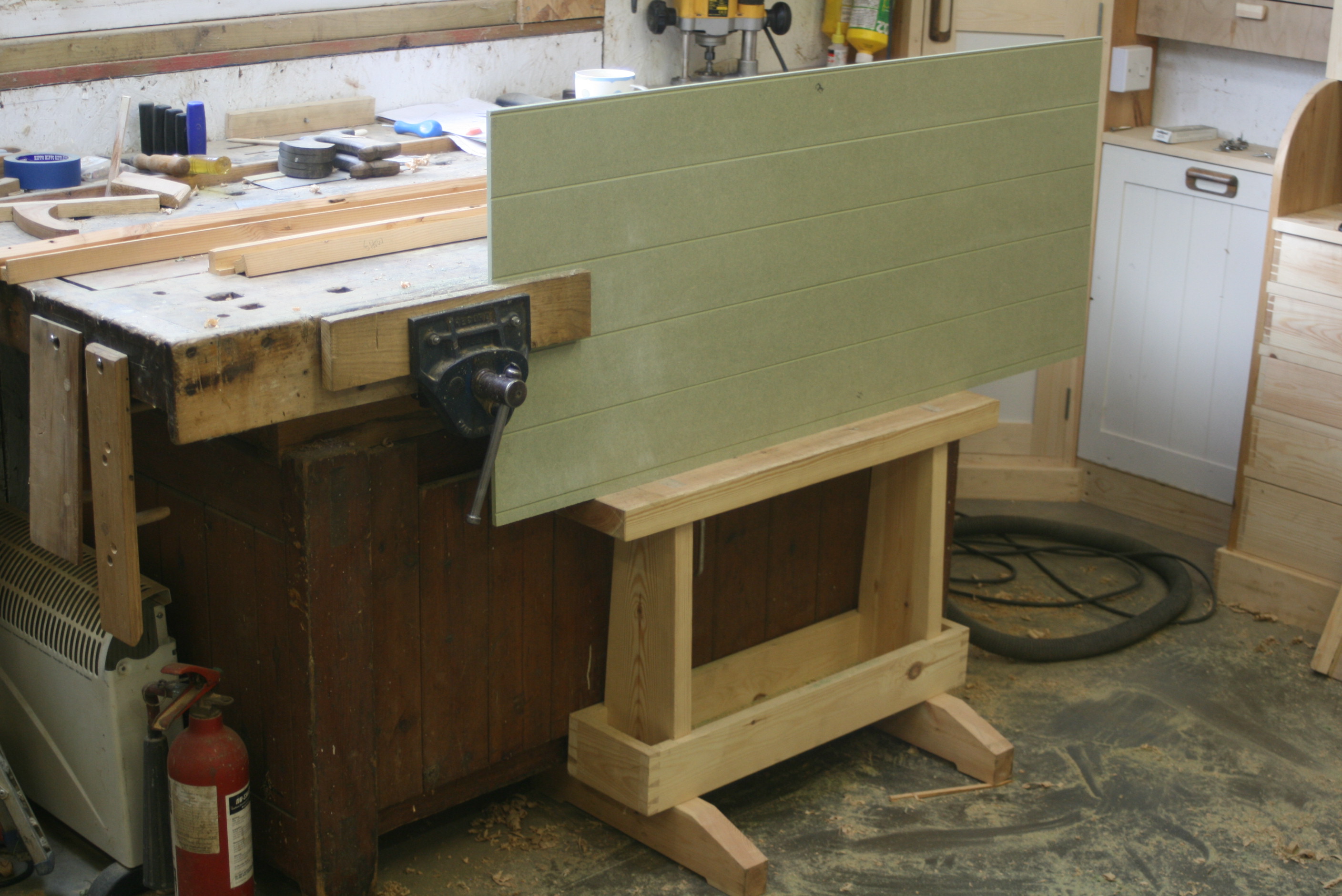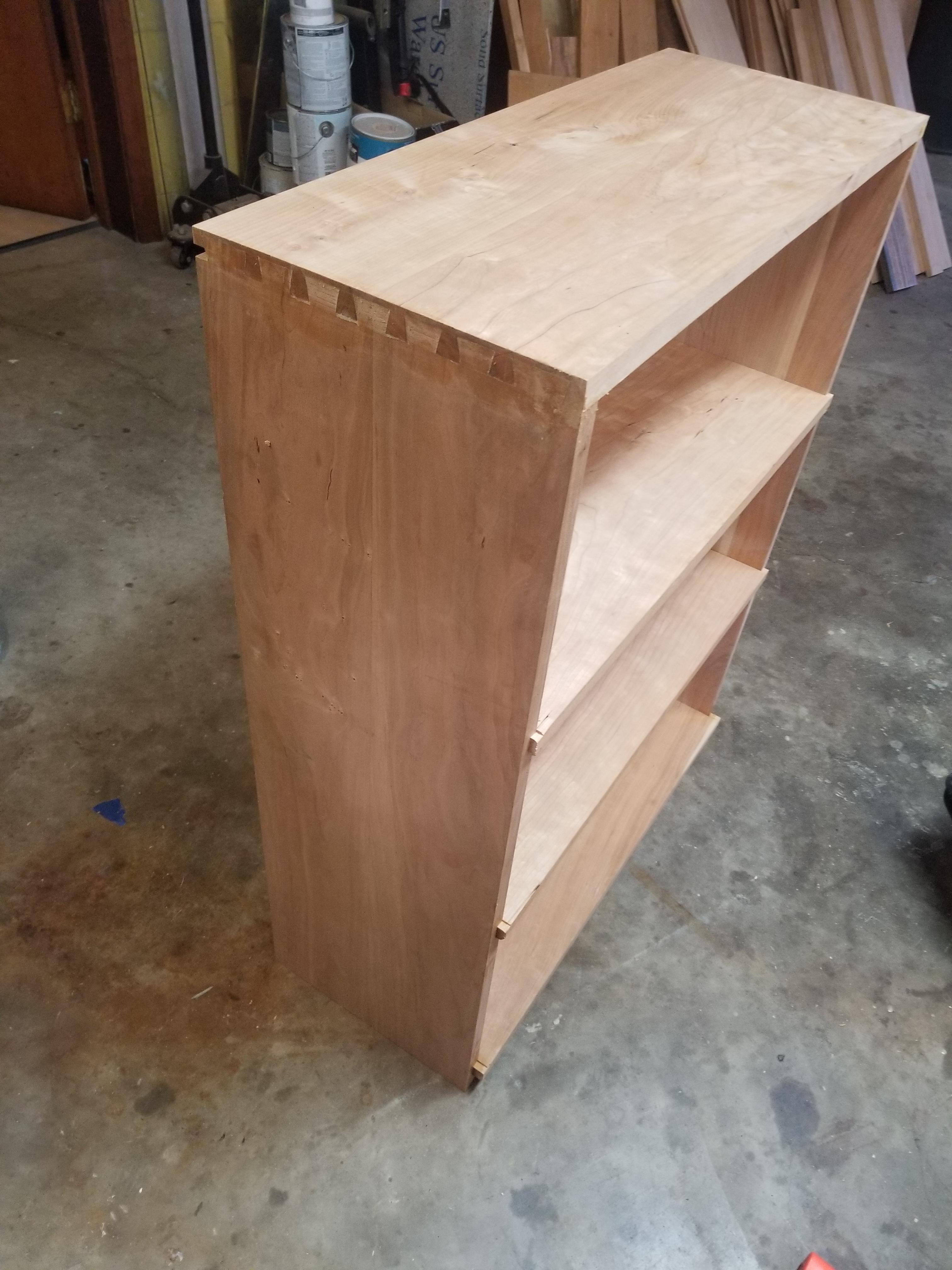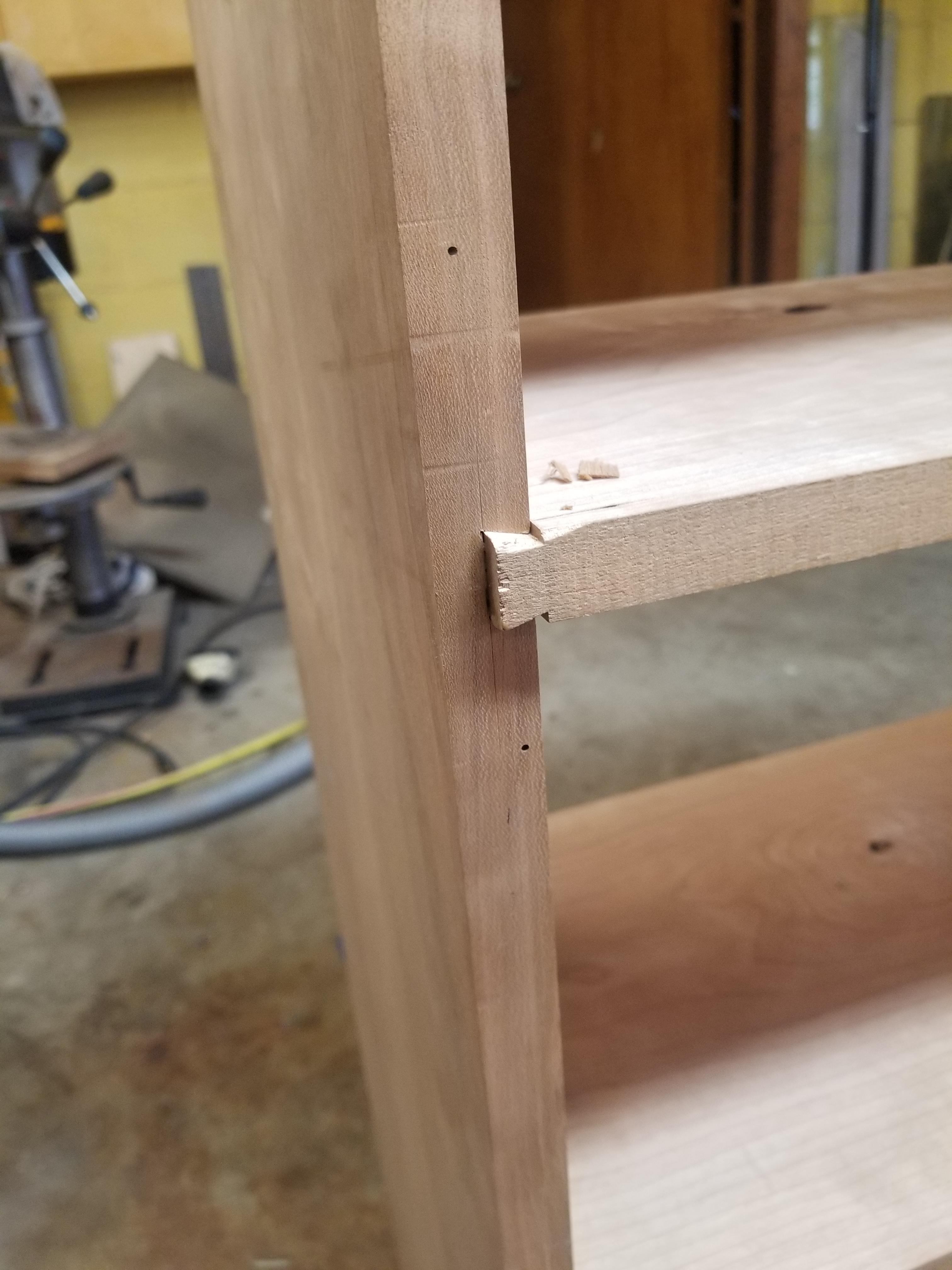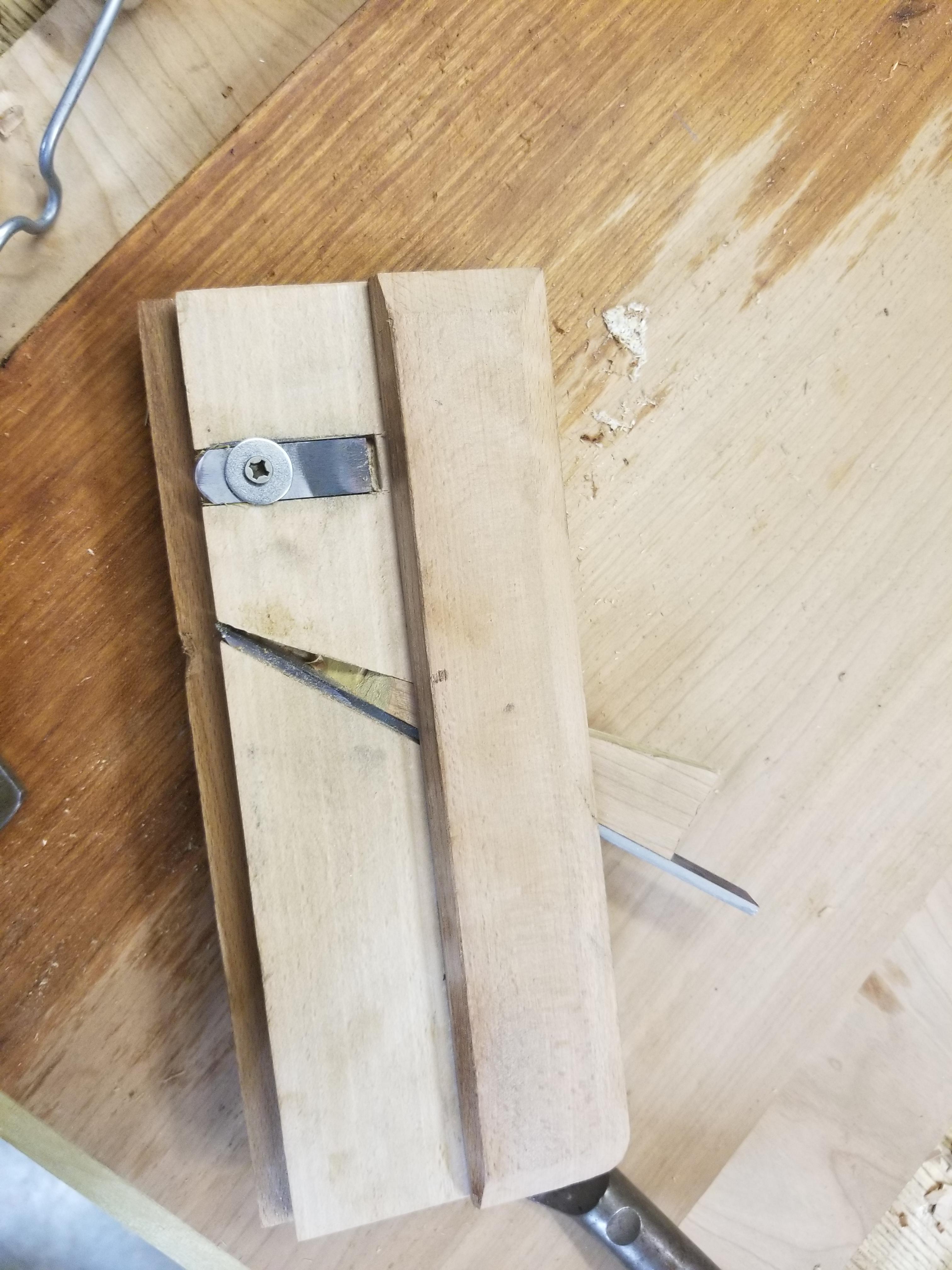This is a topic that came up on another board. I don't like to make furniture, I'll admit, and I don't make it to a very high standard.
That said, I have a case to make (actually two) that will have moulding wrapped over all endgrain and doors on the front and a tongue and groove back.
Given my lack of experience and desire for bomb proof furniture (meaning the shelves are glued or joined hard into the case sides, and the corners are generally dovetailed), I often end up with sides that bulge or bow a little bit. Would it ever be seen? I don't know, but I always end up planing the joined case.
(pictures at link, along with brief description)
https://imgur.com/gallery/0ujixns
It occurs to me that a lot of people probably haven't done this and it's just a little more tricky than planing something on a bench.
But it's made less tricky with...you guessed it, the cap iron.
The wood is a bit ratty on the wall-facing side of this case, but two things will help - I'll fix the small worm groove with the equivalent of beaumontage (I'll make something), and this case will be stained (and sanded) - both staining and sanding are something I rarely do.
The key is only finding a position you can work in, and in this situation, laying my sawbench over and putting cardboard over it, butting the case against the fence was good enough. If you get rough with something like this, the back end of the case can lift, so it's a matter of taking time to get the feel (affixing this to something more tightly is possible, but not a time saver in this case, so I didn't do it).
For ease, I want to plane from the top of this case down (the shelves are all full length dovetail joined, so no endgrain at the bottom end) - the cap iron will guarantee this is good enough.
Once this is all figured out, the process is simple. Sharpen the planes, plane off the high spots with the jointer, take heavier smoother shavings and then lighter. My objective with the plane is really to plane as well as I'd finish plane anything, because anything other than that will result in a lot of follow up sanding (I want to be able to use 220 grit only, the finish level I've chosen for staining - and not have to sand out any other nits).
The whole process for both sides took about 20 minutes, mostly because the fairer side of this thing had a pronounced bow.
Again, there will be two of these - this is the top - the bottom will be similar, but sit in a base and it will be much deeper in depth.
Doing full length dovetails for the shelves was iffy. This isn't going to be glitzy furniture, but I can't bring myself to just throw something together with screws or gimmicks.
That said, I have a case to make (actually two) that will have moulding wrapped over all endgrain and doors on the front and a tongue and groove back.
Given my lack of experience and desire for bomb proof furniture (meaning the shelves are glued or joined hard into the case sides, and the corners are generally dovetailed), I often end up with sides that bulge or bow a little bit. Would it ever be seen? I don't know, but I always end up planing the joined case.
(pictures at link, along with brief description)
https://imgur.com/gallery/0ujixns
It occurs to me that a lot of people probably haven't done this and it's just a little more tricky than planing something on a bench.
But it's made less tricky with...you guessed it, the cap iron.
The wood is a bit ratty on the wall-facing side of this case, but two things will help - I'll fix the small worm groove with the equivalent of beaumontage (I'll make something), and this case will be stained (and sanded) - both staining and sanding are something I rarely do.
The key is only finding a position you can work in, and in this situation, laying my sawbench over and putting cardboard over it, butting the case against the fence was good enough. If you get rough with something like this, the back end of the case can lift, so it's a matter of taking time to get the feel (affixing this to something more tightly is possible, but not a time saver in this case, so I didn't do it).
For ease, I want to plane from the top of this case down (the shelves are all full length dovetail joined, so no endgrain at the bottom end) - the cap iron will guarantee this is good enough.
Once this is all figured out, the process is simple. Sharpen the planes, plane off the high spots with the jointer, take heavier smoother shavings and then lighter. My objective with the plane is really to plane as well as I'd finish plane anything, because anything other than that will result in a lot of follow up sanding (I want to be able to use 220 grit only, the finish level I've chosen for staining - and not have to sand out any other nits).
The whole process for both sides took about 20 minutes, mostly because the fairer side of this thing had a pronounced bow.
Again, there will be two of these - this is the top - the bottom will be similar, but sit in a base and it will be much deeper in depth.
Doing full length dovetails for the shelves was iffy. This isn't going to be glitzy furniture, but I can't bring myself to just throw something together with screws or gimmicks.




































